Interview by Brian Kevin
Photos by Jason Frank
From our December 2022 issue
It’s been quite a year for Jonathan Nathaniel Hayes, who runs Madawaska’s Poland Spring Seppala Kennels. For starters, he had the surreal experience of attending a few screenings of True North: Legends of Dogs and Men, a documentary released last winter about a seven-day expedition through the Maine north woods that he undertook in 2021, raising money for a Maine monument to a famed sled dog named Togo. Togo was the lead dog of a musher named Leonhard Seppala, who, in 1925, mushed a team of dogs 261 miles across the Alaskan bush to deliver a package of diphtheria antitoxin to the town of Nome, where an outbreak was threatening to wipe out the population. Seppala’s was the longest and most dangerous stretch of a massive relay of mushers that would come to be known as the Great Race of Mercy, which saved Nome and turned its participants into national heroes.
In 1927, Seppala and his team came to Maine for a race at Androscoggin County’s Poland Spring House resort, and Seppala ended up starting a kennel there with Elizabeth Ricker, whose family owned the hotel. Togo retired to Poland Spring, and today, the Seppala Siberian Sleddog breed, including Hayes’s dogs, traces its lineage to him and his teammates. Hayes designed his 2021 solo expedition to cover roughly 261 miles, from Fort Kent to Greenville, a distance commemorating Seppala and Togo’s legendary serum run.
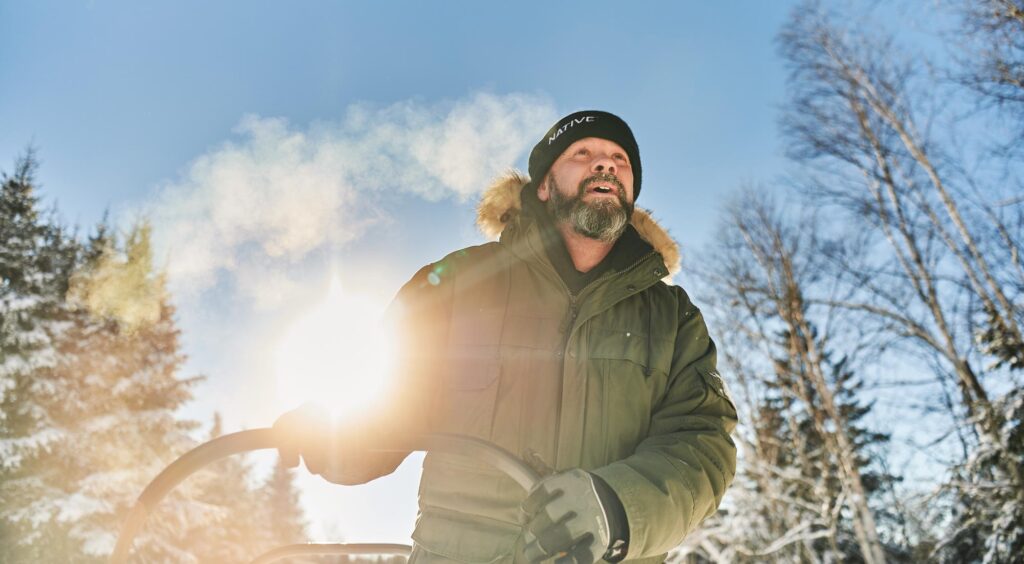

True North was still touring theaters in March when Hayes made the news for a stranger reason: he was accompanying his 17-year-old son on a training run, returning to the kennel, when a rampaging moose attacked their dogs. Hayes’s son, Caleb, shot the moose with a neighbor’s borrowed rifle. The next weekend, while competing in Aroostook County’s Can-Am Crown International Sled Dog Races, Caleb had to be medically evacuated after the team became unmanageable (a consequence of a dog in heat), and he spent several overnight hours in the freezing woods, awaiting a sweep team. Thankfully, he was treated only for minor hypothermia and released.
This season, Hayes begins his most demanding challenge as a musher: the qualifying process for Alaska’s famed 1,000-mile Iditarod Trail Sled Dog Race. A musher must complete three approved races with a total of 700 miles among them; Hayes will run his first qualifying race in February, in Michigan. The Iditarod follows much of the route of the 1925 serum run, and Hayes plans to compete in 2025, marking the 100-year-anniversary of Seppala and Togo’s history-making feat. We talked to Hayes about the pair’s legacy and more.
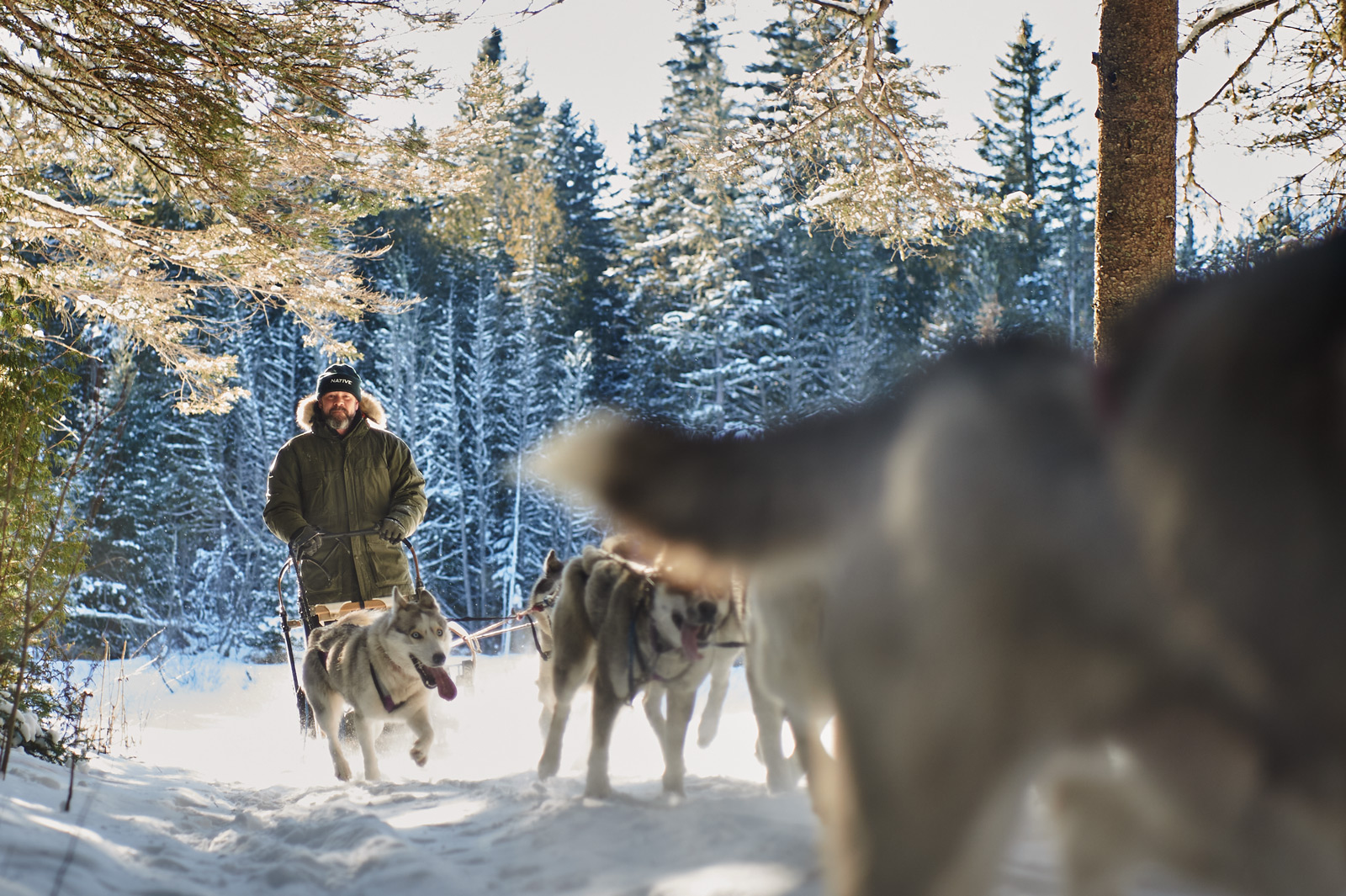
How did you come into mushing in the first place?
Before I moved to Maine, I met this old-timer in Tennessee who mentioned that he was from here, and he gave me some advice. If you’re going to move to Maine, he said, you have to find a way of loving the winter, because you can’t just sit it out in the house. I had always had a passion for canids — I’d done some search and rescue in the Marine Corps, and canids are what I ended up studying in college, for my wildlife-biology degree. So it didn’t take me long to put together: winter, dogs — okay, I’m going to become a musher.
I hadn’t even met a musher. But I’m a purist, very nostalgic, an old-school kind of guy. I’d rather be in a canoe than a motorboat, and I’d rather be on horseback than riding a dirt bike, and I’d rather be on a dogsled than a snowmobile. That’s just how I’ve always been.
I made the rookie mistake, when I got up here, of getting an Uncle Henry’s and adopting people’s couch-potato, pet-quality Siberian huskies. I was naive. I lived down in southern Maine then, this was about 1996, and my stepsister came back from a business trip in northern Maine with a brochure for the Can-Am. A $25,000 purse. I thought, I’m going to go up there, win first place, and come home with a lot of money. I came in last. Although I did beat three other contestants who scratched because the snow was extremely deep that year.
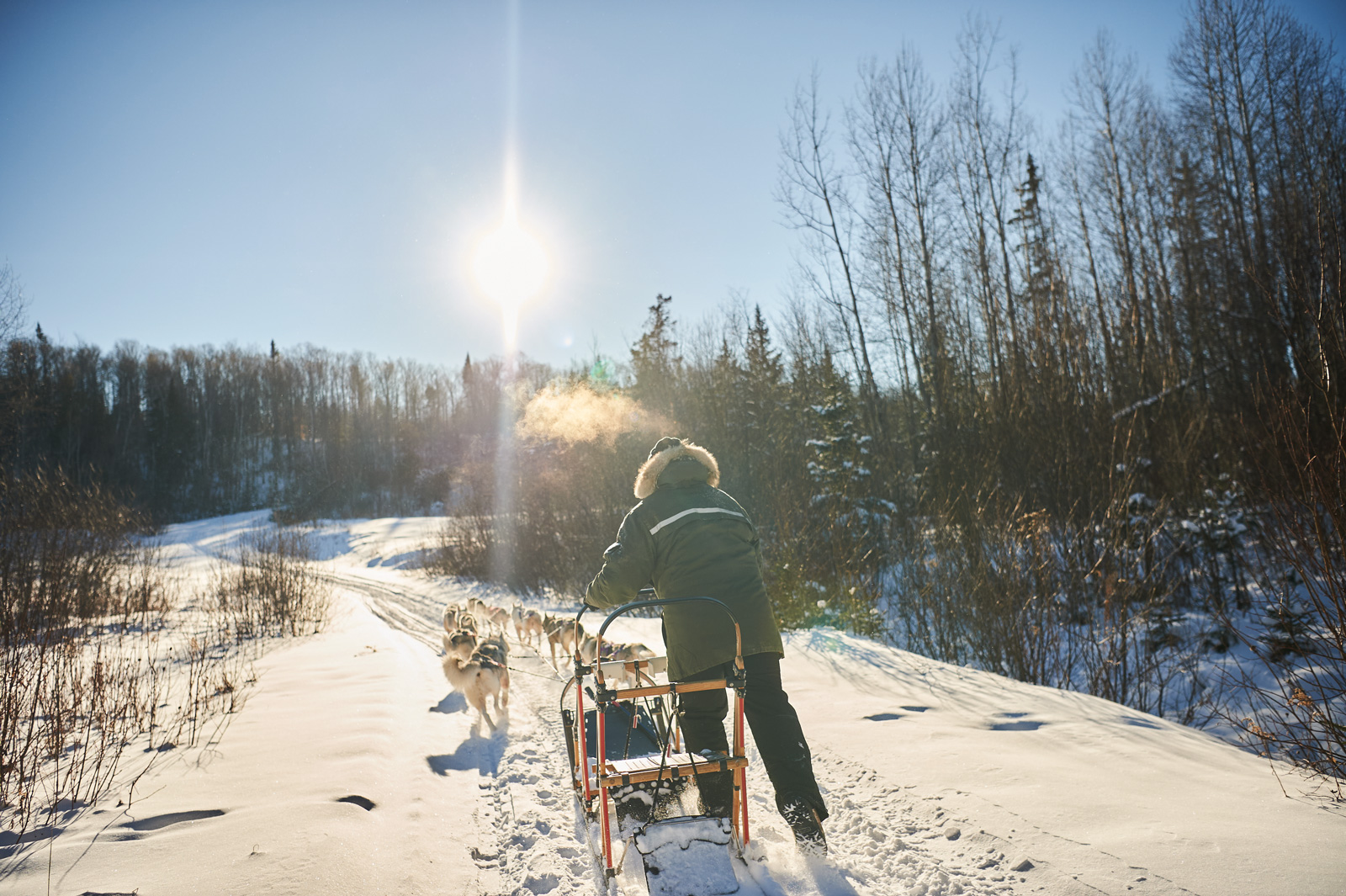
How did your interest shift to Seppala Siberians?
I started doing my research then, and the team that had come in third that year was a Seppala team. Being a history geek, I’d already read a lot of the history, and as I started researching, I was so excited — because, you know, as a person of faith, it starts to look more like providence than just chance that I had happened on this path. I found out that Leonhard Seppala brought Togo and his team of dogs here, to Poland Spring, Maine, and established the first Seppala kennel, and I was beside myself with excitement. I would make pilgrimages there, just to be on the sacred ground. That started my friendship with Cyndi Robbins, the current owner of Poland Spring Resort.
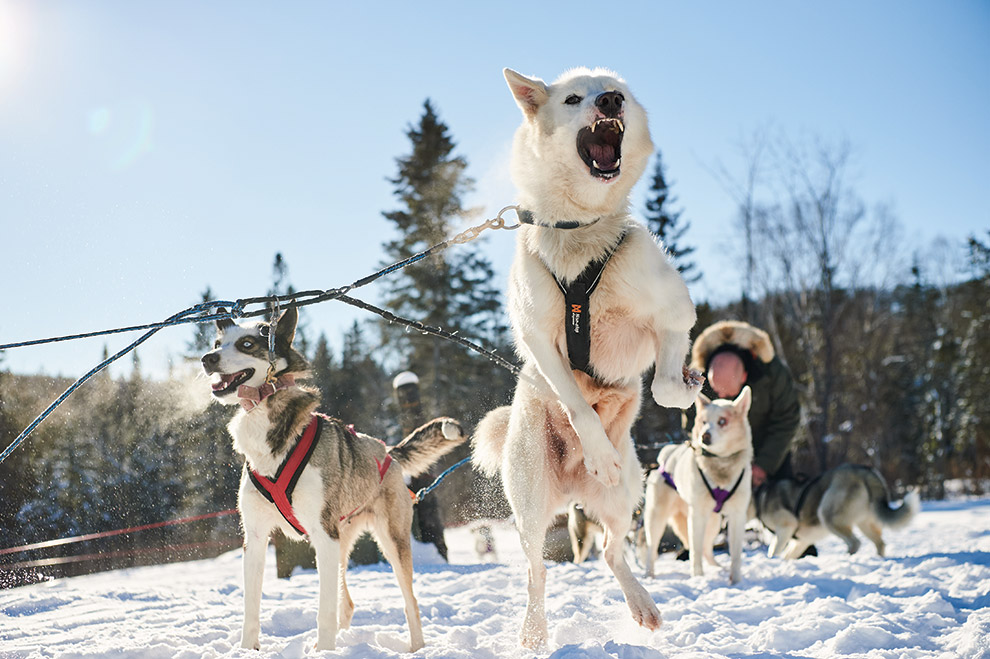
Where, this fall, you and she watched the unveiling of the Togo statue your expedition helped support.
So I’m not a racer, really, but more of an adventurer at heart. You know, I love winter camping, and I love doing it with my sled dogs. For years, I’d thought about crossing the entirety of the Maine north woods. I was looking at DeLorme maps — what route would I take? Then Cyndi called me one night and said, “We’re going to raise money for a Togo statue here.” And I said, “I’m going to do a dog-sled expedition to help raise the money.”
So I did this expedition with eight dogs. Only the first of the seven days of the trail was groomed — from Allagash to Greenville, I was bushwhacking. There were a couple of days where I had a ranger and some hunting guys I know going out to scout the best route for me — sometimes, what’s on the map is not really the case on the ground. To put it in perspective, Leonhard Seppala took 22 dogs on his 261 miles. He dropped some of those dogs off at the roadhouses along the way and then used them as fresh dogs to swap out his team on the way back. So while Seppala and Togo went 261 miles, probably no other dogs on that team did the whole thing. All eight of my dogs had to.
We were carrying two days worth of supplies because I did know what conditions we’d be looking at. I wasn’t dealing with 50- and 60-below temperatures, like they were in 1925. That was horrific for the dogs, horrific for the mushers. We had a big snowstorm and then 35-degree temperatures, so all the snow became sticky cement. The lakes were overflowing, so my dogs on some days were mushing at times through chest-deep water.
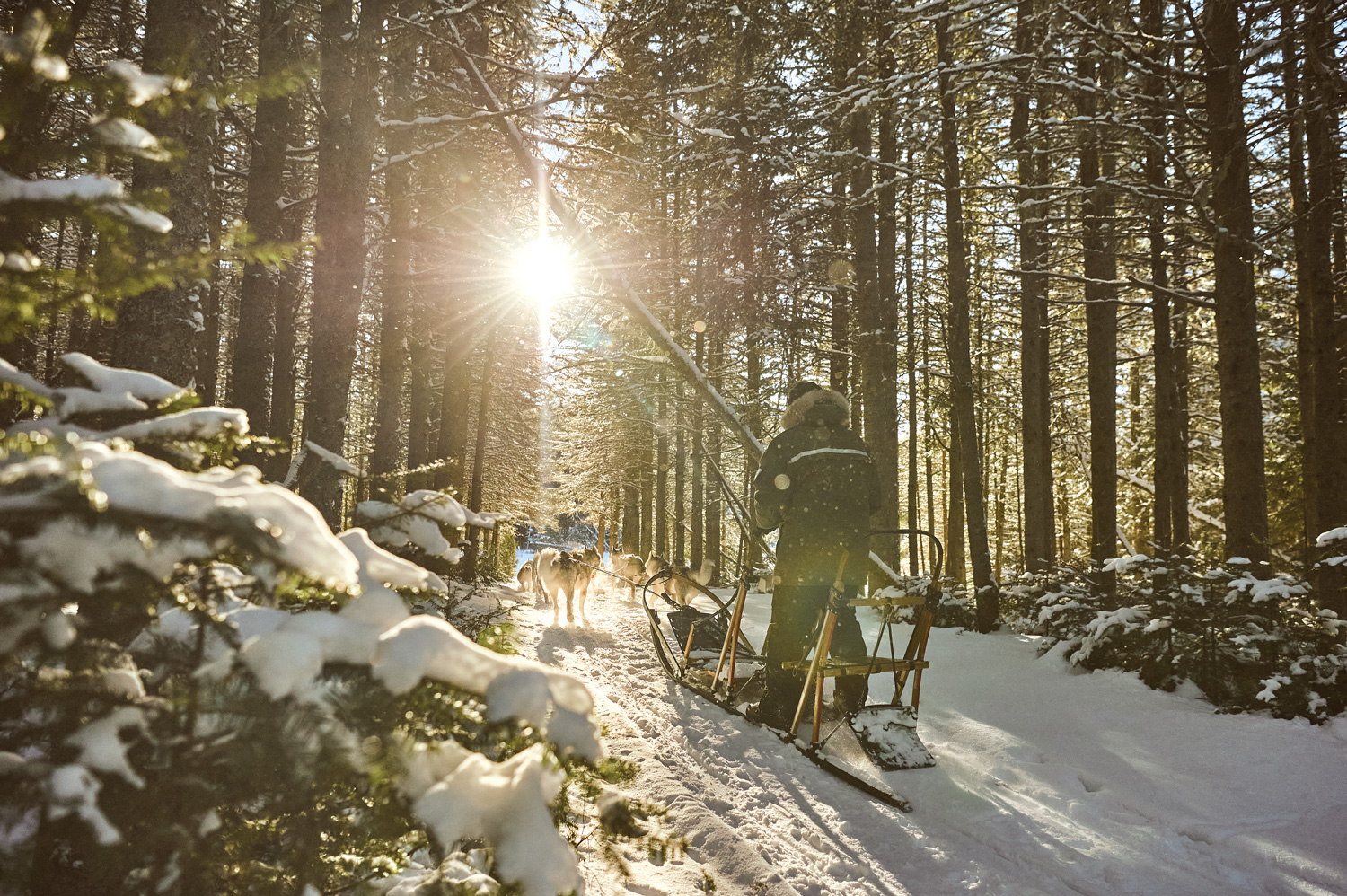
How confident are you about taking a team up to Alaska for the anniversary of the Great Race of Mercy?
It’s becoming so tangible, it makes me nervous — in a good way. Once I get something stuck in my head, it’s kind of hard to get it out. I mean, almost 100 years ago, Leonhard Seppala saves the children of Nome, then comes and relocates here for several years. And the Poland Spring kennel becomes the first specifically Seppala kennel, for these dogs that have since been kept as a distinct breed by all those who have bred them. So to mush a team of Seppalas back to Nome! Our plan is that we’re going to qualify over the next two years for the Iditarod, and then we are going to run the Iditarod as our expedition back to Nome. But even if we should hit a snag, I’m still going. About a third of the Iditarod is on the serum-run trail. If we were to turn this into an expedition, then I would do the whole 674 miles of the actual serum run.
To my knowledge, we would be the first and only team to ever train here in Maine, live in Maine, have Maine as their home base, then go run the Iditarod and come back home. So I think for the region, this should be a pretty big deal.

What does training look like for you now, here at the start of the season?
As soon as we have significant snowfall in northern Maine, which is usually late November or early December, our goal is to be running our dogs 20 to 25 miles, rest them three hours, and then running them 20 to 25 miles back — doing that three to four times a week. Leading up to our big races, I really hope to have my dogs at 40-mile runs, four-hour rests, 40 miles back, and then a day off.
I don’t know if a lot of people necessarily associate Maine with sled dogs and mushing. Should they?
Maine has a mushing history second only to Alaska. Robert Peary, the first person to reach the North Pole, with Matthew Henson and his Inuit counterparts, summered here in Maine, on Eagle Island, and he launched his polar expeditions from Maine. Both the Siberian husky and the Seppala Siberian Sleddog trace their roots back here to Poland Spring. There’s Perry Greene, who raced Chinooks and was the last to attempt an ascent of Katahdin, in 1951. Cecil “Mush” Moore, in the late 1960s, lived in Lewiston and mushed — are you ready for this? — from Alaska to Lewiston. And I could go on. Maine has a truly rich mushing history, and it continues.

What sets the Seppalas apart from other sled dogs?
They’re a very small dog — you know, 40 to 60 pounds. Most people are surprised at their size. But when I have a litter of several puppies, like I do right now, I know that most if not all are going to make good sled dogs. Maybe not Michael Jordans, but they’re all going to make really good sled dogs. They work well with each other, really well with people, not prone to fighting. A complete stranger’s toddler can walk up, and as amped as they are, they’ll stop, turn, and lick this stranger in the face. That really laid-back nature throws people off, because they assume that they’re so chill at home and in the kennel, they’re not high-energy enough for the work. But the moment you put a harness on them, it’s like a switch flips in their brain. So it’s just this consistent work ethic, and they’re amiable.
I really do believe they should be the state dog, if there were such a thing. Leonhard Seppala and Togo, these epic figures in history, are so well-rooted here. And their continued history, through their descendants, is so rooted here. It’s a no-brainer. There really is no better choice than the Seppala for state dog.
One hundred years later, on January 27, 2025, Hayes and his team of 16 Seppala Siberian Sleddogs will begin retracing the 700-mile route of the history-making 1925 Serum Run from Nenana to Nome, Alaska. Click here for updates from the team as they make their way across the Alaskan wilderness.
This interview has been edited and condensed for brevity and clarity.




